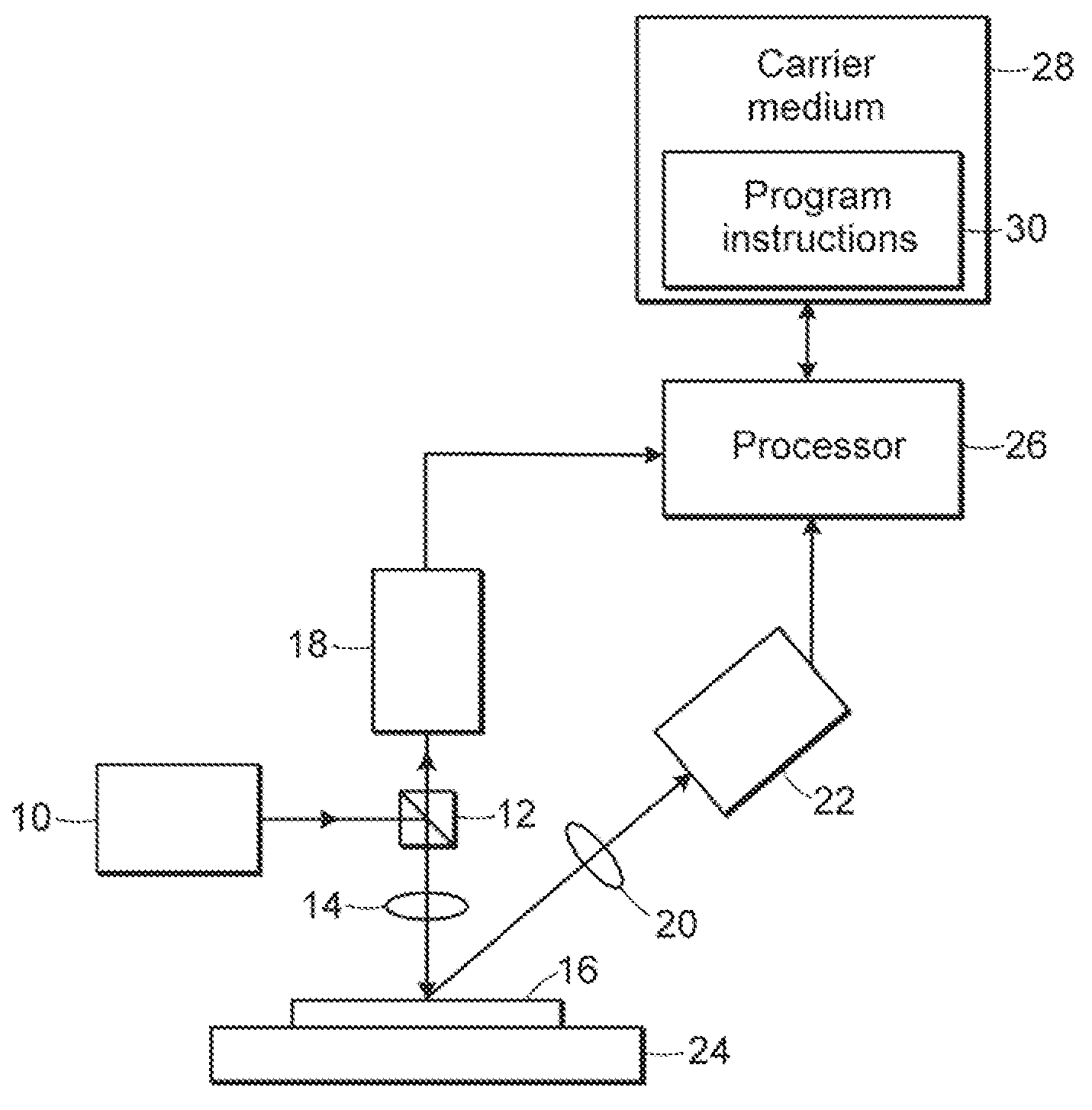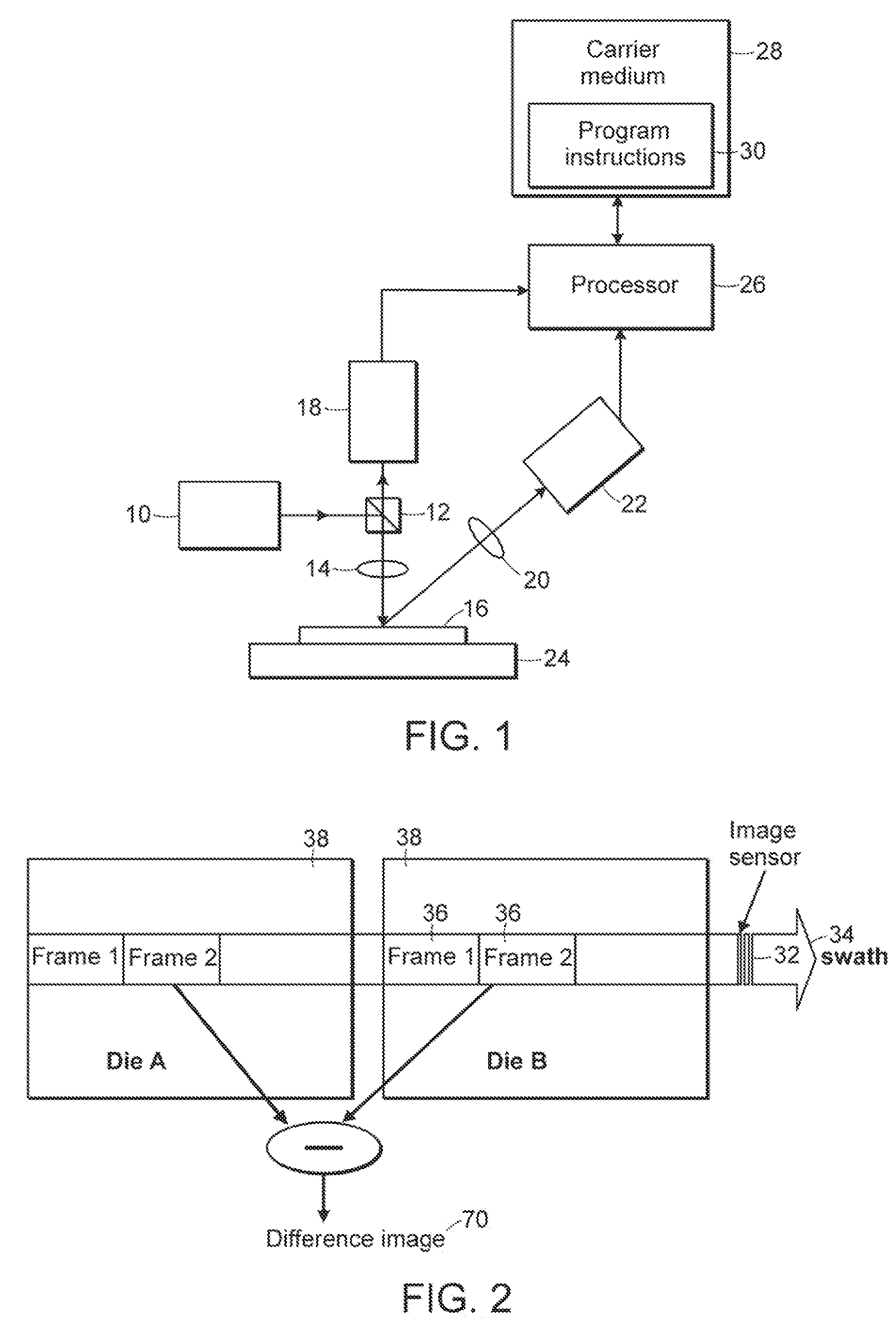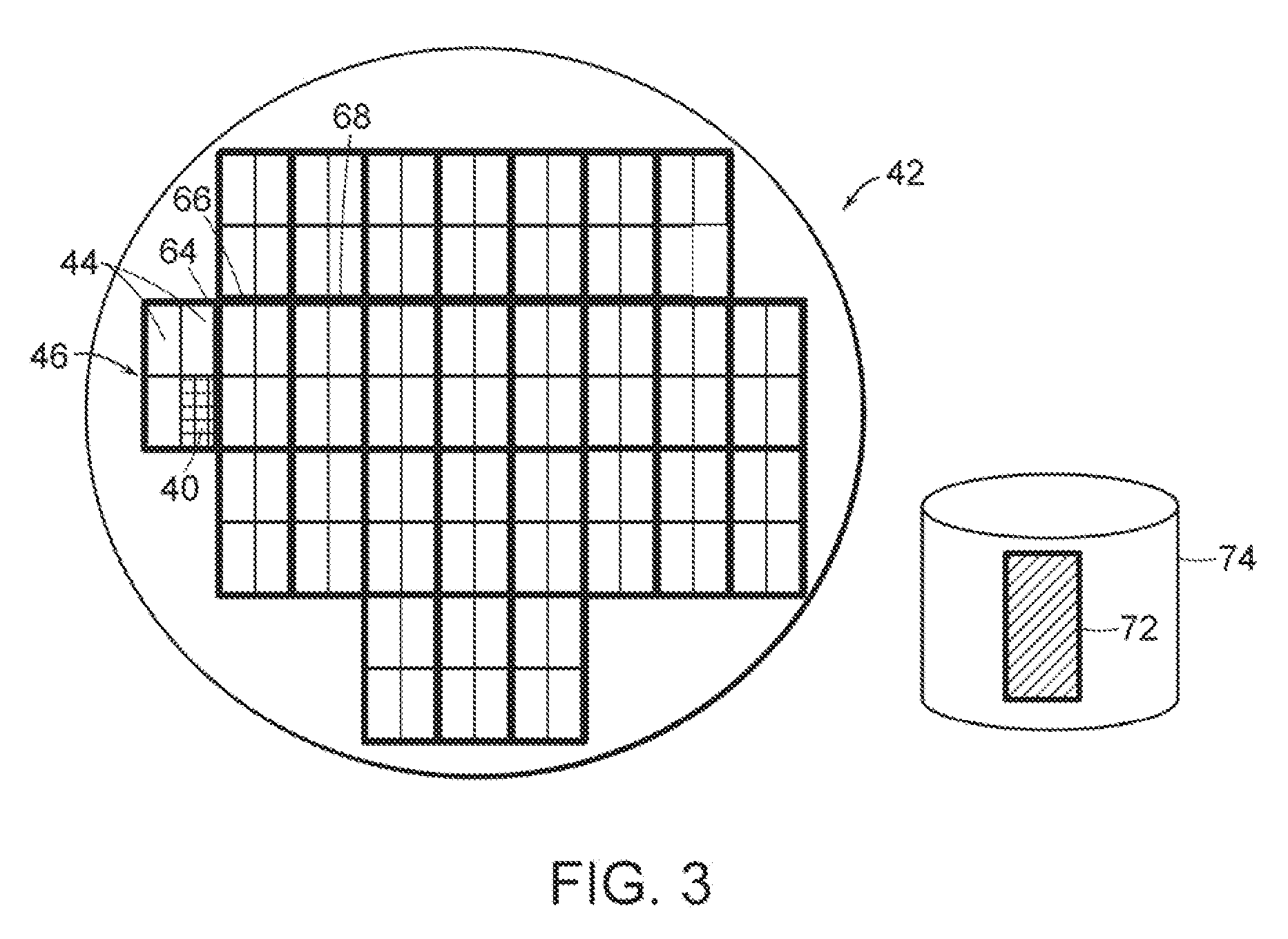Semiconductor device property extraction, generation, visualization, and monitoring methods
a technology of semiconductor devices and properties, applied in the direction of material analysis, measurement arrangements of variables, instruments, etc., can solve the problems of inability to inspect patterned wafers, failure and inability to detect defects of decreasing siz
- Summary
- Abstract
- Description
- Claims
- Application Information
AI Technical Summary
Benefits of technology
Problems solved by technology
Method used
Image
Examples
Embodiment Construction
[0064]As used herein, the term “specimen” generally refers to a wafer, a photomask, or a reticle. However, it is to be understood that the methods, carrier media, and systems described herein may be used for monitoring a characteristic of any other specimen known in the art.
[0065]As used herein, the term “wafer” generally refers to substrates formed of a semiconductor or non-semiconductor material. Examples of such a semiconductor or non-semiconductor material include, but are not limited to, monocrystalline silicon, gallium arsenide, and indium phosphide. Such substrates may be commonly found and / or processed in semiconductor fabrication facilities.
[0066]A wafer may include one or more layers formed upon a substrate. For example, such layers may include, but are not limited to, a resist, a dielectric material, a conductive material, and a semiconductor material. Many different types of such layers are known in the art, and the term wafer as used herein is intended to encompass a wa...
PUM
 Login to View More
Login to View More Abstract
Description
Claims
Application Information
 Login to View More
Login to View More - R&D
- Intellectual Property
- Life Sciences
- Materials
- Tech Scout
- Unparalleled Data Quality
- Higher Quality Content
- 60% Fewer Hallucinations
Browse by: Latest US Patents, China's latest patents, Technical Efficacy Thesaurus, Application Domain, Technology Topic, Popular Technical Reports.
© 2025 PatSnap. All rights reserved.Legal|Privacy policy|Modern Slavery Act Transparency Statement|Sitemap|About US| Contact US: help@patsnap.com



